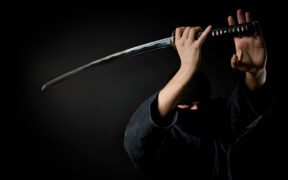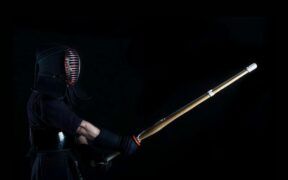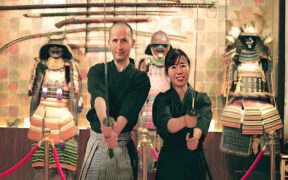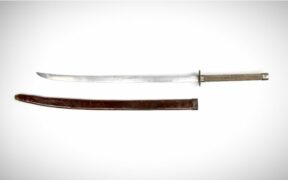What is Kendo? – The Japanese Way of the Sword
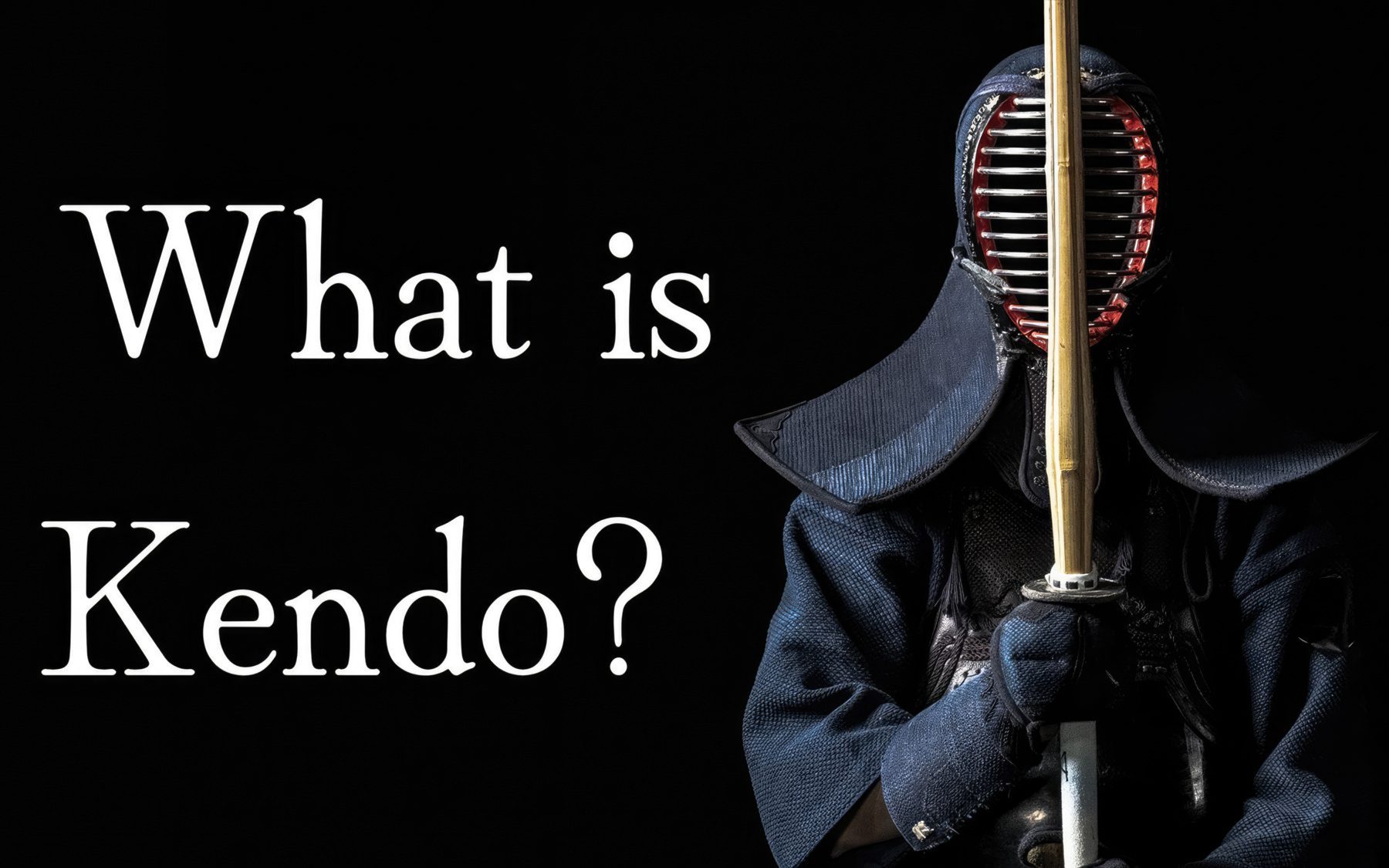
No other sword martial art or educational sport is as popular as Japanese kendo. It is a sword sport rooted in Japanese culture and still alive throughout the world, and roughly six million people still practice it today.
Kendo means The Way of the Sword, a Japanese traditional martial art (budo) that descended from the sword samurai culture of kenjutsu. The path of kendo is not just increasing one’s physical prowess; it is instead a way of life that teaches its practitioners the values of self-discipline, respect, and personal growth.
If you are a new trainee in kendo and wish to learn more, you have come to the right place. In this article, you will discover exactly what kendo is and its meaning. Then you will discover the swords in use, the equipment, and how they all work together in kendo’s techniques and rules. We will conclude the article with the history of kendo and the benefits of the sport. We will also be comparing it to the art of laido.
Kendo Swords

The Japanese sword is the main tool for practice and fencing in kendo. It follows the pattern of the katana, the main traditional weapon of the samurai that was highly nurtured and raised to mythological status during the Edo Period of Japan. This period in Japan’s history was also when kendo developed as a sport.
However, the tools and swords used in the art of kendo differ greatly from the original steel katana made for battle created out of traditional tamahagane steel. It is instead built out of material that cannot lethally injure a person, which is why there are two main types of sword training categories in kendo; the bokken and shinai swords.
Shinai (Bamboo Material)
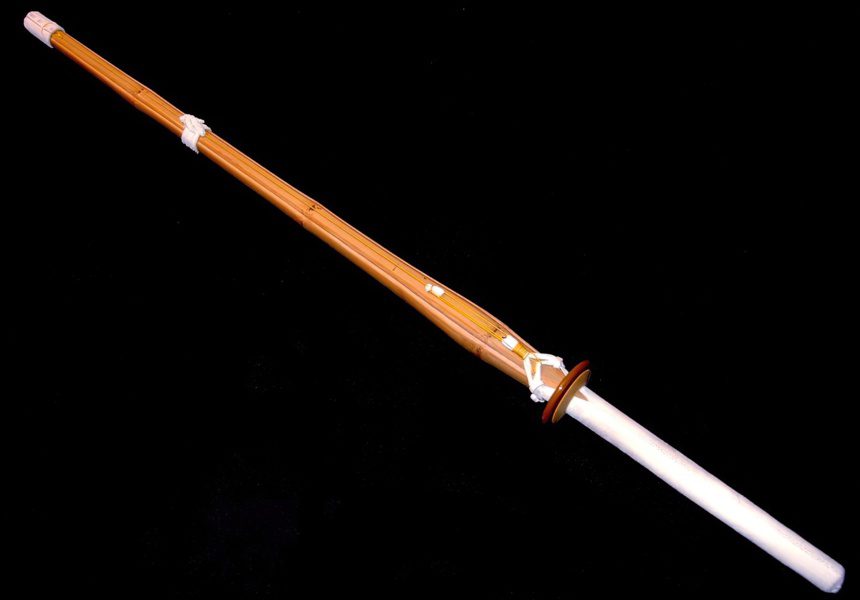
The shinai is the main training tool or sword used in kendo. It is a blade made of bamboo that is flexible yet sturdy and known for its durability, which makes it an ideal training weapon. Because it is made from bamboo, it won’t cause serious harm to the opponent, especially if they are wearing armor. It can be made out of natural bamboo material, native to many Asian regions, or modern synthetic carbon shinai, which is more durable.
Shinai swords are straight and feature a two-handed handle (tsuba) with a smaller guard (tsuka). The length of a traditional shinai used for practice and tournaments is around 45 inches (115 cm). The weapons can also come in different sizes depending on the user’s height. Usually, leather straps or caps are tightly bound throughout the sword’s blade.
Bokken (Wood Material)
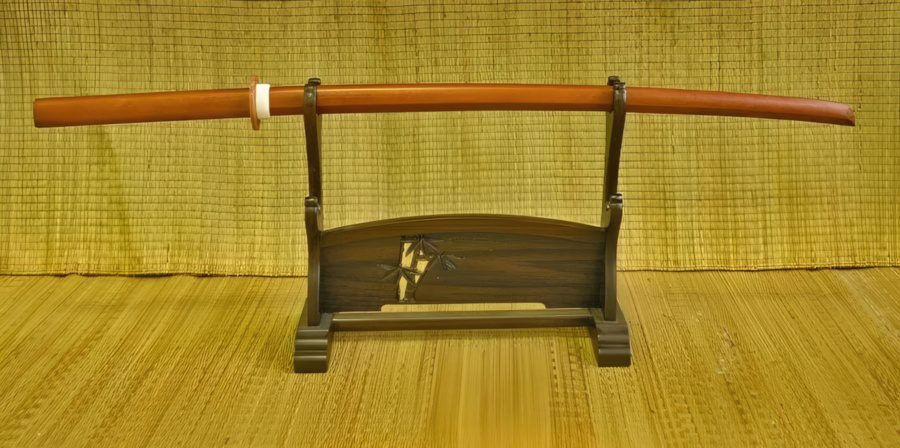
The wooden Japanese sword called a bokken is another practice tool used in kendo. Although it is frequently used for practicing kata or katana attacking and defending techniques, it isn’t a sword used for sparring or tournaments. This is primarily due to safety because wooden material has a better chance of inflicting injury.
Laito and kendo are very similar in style, and practicing with a curved wooden katana is much closer to the original samurai sword. That is why the bokken in kendo is primarily used for swinging and honing katana moves that can be utilized in kendo shinai duels. The most common length of a bokken is around 39 to 43 inches (100 to 110 cm).
Kendo Equipment and Arena
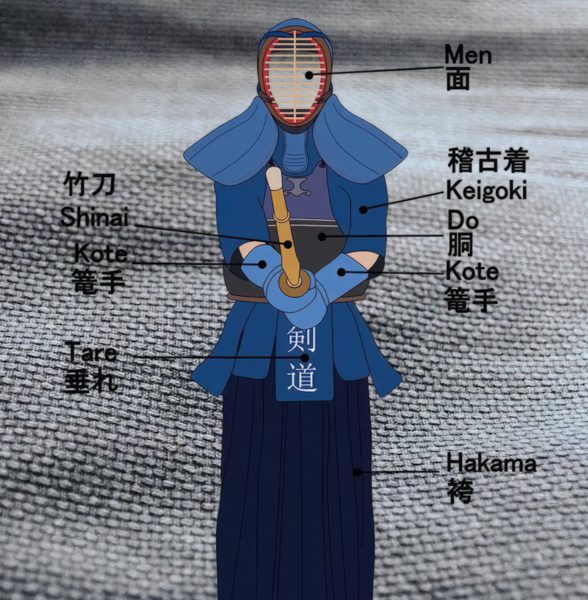
Kendo is one of the sword martial arts with the least amount of injuries thanks to the armor worn, called bogu. It consists of several pieces tied together that aim to protect the user’s face, torso, hands, and waist. Rules are also added on how to use striking techniques to support safety further.
Parts of the kendo armor are:
- Men – The helmet of the kendo apparel.
- Men gane – The metal lines in front of the user’s face for their protection.
- Tsuki dare – A series of fabric and leather straps woven around the user’s neck.
- Men dare – The same straps with added padding to protect the sides of the neck and shoulders.
- Tenugui – A cotton towel that wraps around the men helmet to absorb sweat, offer protection, and provide a more comfortable base for the helmet.
- Keigoki – A jacket (kendogi) placed under the rest of the kendo gear.
- Do – A breastplate surrounding the user’s entire torso and stomach area.
- Shinai – The bamboo sword used for fencing and dueling.
- Kote – Thickly padded fabric gloves that extend from the user’s hands toward the elbow.
- Tare – Three or more vertical fabric flaps that protect the user’s waist and groin area.
- Hakama – A traditional garment separated in the middle to form wide and comfortable trouser legs.
Like many other Japanese martial arts, the user fights and duels while barefoot. This is to provide more stable footwork that is key to kendo fighting, but also because hitting the feet or legs of your opponent is illegal. Some kendoki (kendo practitioners) use traditional tabi footwear, which can be made from leather and used as part of tradition while training in kendo.
Dojo
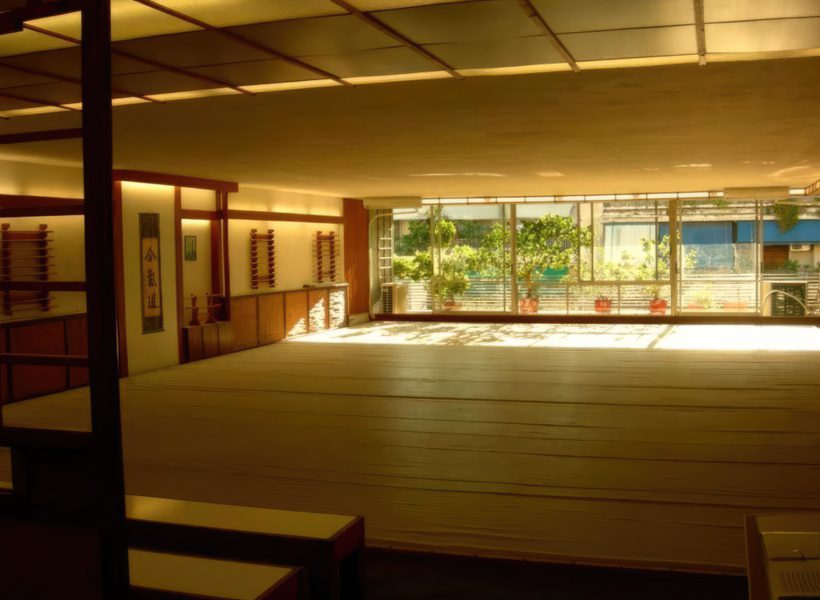
The training facility of kendo is called a dojo, which translates as Place of the Way, which is a traditional arena for learning meditations and martial arts. It has an open wooden floor that can accompany many practitioners at once. A dojo can also be similar to a gymnasium which is common for elementary or high school students.
The most popular training hall for kendo practitioners in Japan is Noma Dojo, which is why some kendo halls worldwide have adopted the name. It has ground rules, such as walking barefoot, but its primary rule is respect for the masters and fellow students.
Training Techniques of Kendo
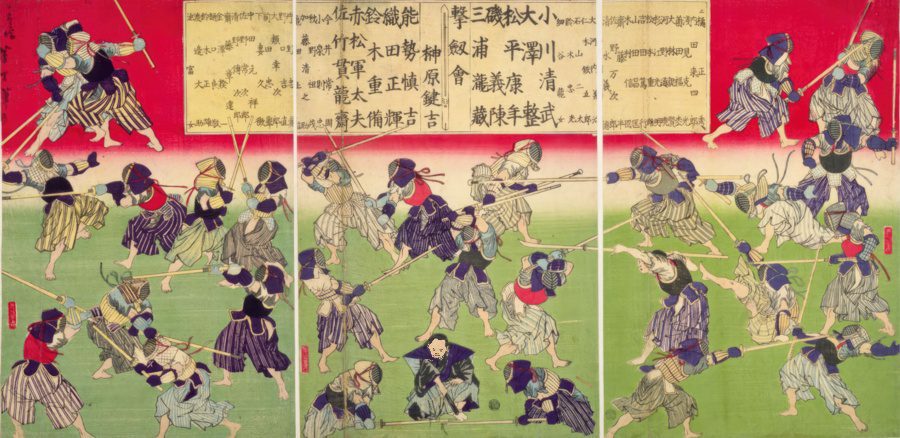
Kendo trainees and practitioners are commonly called kendōka, which directly translates to one who trains in kendo. The other terms used are kenshi and kendoists, translating to swordsman. Practitioners must have the proper equipment on hand to train and study the techniques of kendo.
Training in kendo can be done any time of the year, but the traditional Japanese way is to train in winter and summer. This training method is referred to as shochugeiko and kangeiko, which are harder due to the extreme temperatures of the seasons. The training can be split into two parts using a bamboo or wooden sword style.
A bamboo sword style combines a shinai sword with the gearset, combining different gear parts. Different methods which can be followed are:
- Practice swings
- Cuts, thrusts, and slashes
- Hitting practices and strikes
- Condition strikes (striking over a lengthy period of time)
- Sparring and dueling
- Standoff (tachikiri), where the limits of physical strength are tested
A wooden sword style, otherwise called shape training, is where bokken types of swords are used to practice and hone katana attacks or defenses such as:
- Japanese (kata) motions
- Basic training methods with a wooden katana
- Styles and techniques of Iaito swords used in Iaido martial art
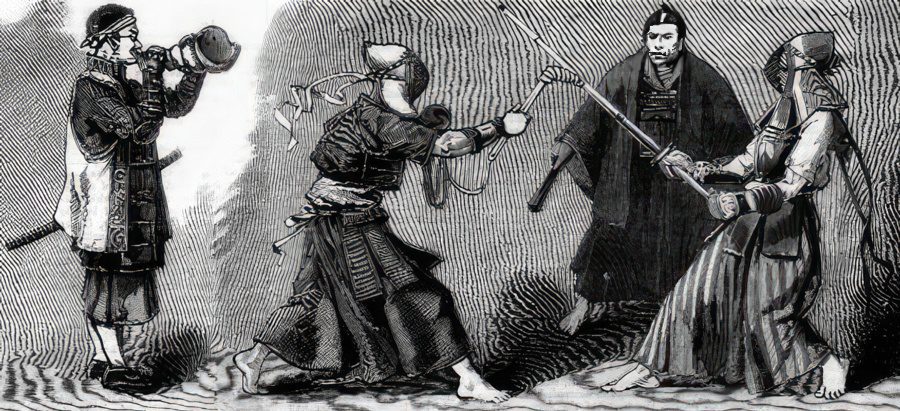
Kendo attacking techniques can be slashing and thrusting and can be performed with all the practitioner’s strength and power but only in designated areas. These techniques can be split into two categories based on initiating a strike or making a counterattack.
Shikake waza is the initiation of a kendo strike. Different methods of this are:
- Tobikomi waza – a striking technique when the opponent leaves an opening or has a weak and tired spirit.
- Katsugi waza – a surprise attack with the shinai lifting the sword over the opponent’s shoulder.
- Hikibana waza – losing balance when attacking to lure the opponent and open his guard, which will follow with a powerful slash.
- Harai waza – striking the opponent’s shinai and the unarmed opponent’s armor.
- Nidan waza – a rhythm of connecting correct strikes or holding the opponent’s attention and posture to create the opportunity for an opening of a second strike
- Debana waza – striking the opponent as they are about to strike
Oji waza is a counterattack or response after the opponent’s attack. Different methods include:
- Kaeshi waza – parrying the opponent’s shinai and flipping over to strike the opponent’s opposite side.
- Suriage waza – sweeping up the opponent’s shinai with your own and then striking from the direction of where their attack came from.
- Uchiotoshi waza – knocking the opponent’s shinai to the right or left side and neutralizing an enemy attack while performing a counterattack.
- Nuki waza – avoiding an enemy attack and responding with a perfectly executed counterattack.
Kendo also tends to be louder than other martial arts because of the shouting used in fighting, called kiai. This is done with each attack or counterattack to express the wielder’s fighting samurai warrior spirit. Another aspect of the kiai is the foot stomp called fumikomi-ashi. Some kendo practitioners call out their technique before an attack to show that the strike and point obtained were not by accident.
Fundamentals
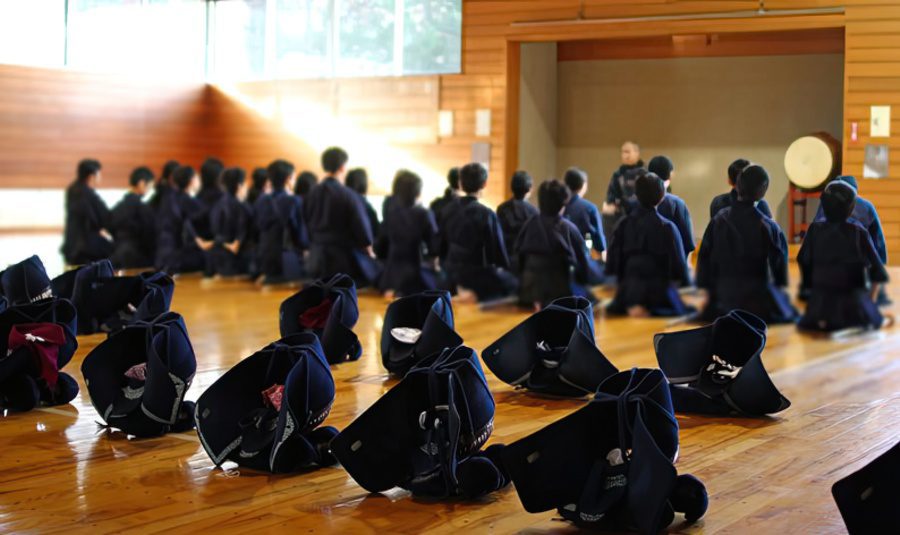
The most important thing to know about kendo is the reiho, meaning rules of conduct and etiquette. They exist partly because of traditional reasons that are still widely respected today. The origins of reiho lie in the customary behavior in Japan, which has roots in the ideals of early Shinto, Buddhism, and Zen. Some of these rules include:
- Bowing – bowing to the master, the students, and the dojo.
- Walking barefoot – not using outside shoes when training in the kendo arenas or dojos.
- Not touching or jumping over someone else’s equipment – each person’s armor must be respected.
- Meditation – each kendo practice traditionally starts with a short period of meditation to calm their user’s minds and spirits
- Respect for training partners – the opponents sparring or dueling are not one’s enemy, and they are to be treated with respect allowing the martial art test of one’s skills.
Rules of Kendo
Kendo is a one-on-one type of competitive sword sport, meaning that there are rules given by the International Kendo Federation which need to be followed. By following these rules, only one victor may emerge. The most difficult part of kendo is winning a match using the shinai swords as you compete with many experienced users that can demonstrate extremely fast strikes.
Usually, a fight is done with a shinai bamboo sword. However, some rules allow the use of two swords, one large and one small shinai, or other weapons using the technique of jutsus. This falls in line with the popular duel-wielded method of Miyamoto Musashi. Matches are executed in dojos or arenas with a 30×36 foot (9×11 meter) boundary marked with white lines.
The game time can be from three to ten minutes, depending on the age and experience of the kendo practitioners. A total of three points can be scored to define a victor, and these are achieved when correctly slashing or thrusting with the top part of the blade into designated targeting point areas while holding the correct posture. The designated strike areas include:
- The top or the sides of the helmet
- The padded areas on the wrists protectors
- The right or left side of the armor protecting the torso area
- In front of the head protector around the throat
Three referees score the match by holding white and red flags in each hand. To declare a point, the referee raises his hand with the color associated with the duelist, red or white. After each strike, the referees agree on whether it will be accepted, and two referees must agree for the point to be counted. The All Japan Kendo Federation sometimes allows kendo matches to end in a draw.
History of Kendo
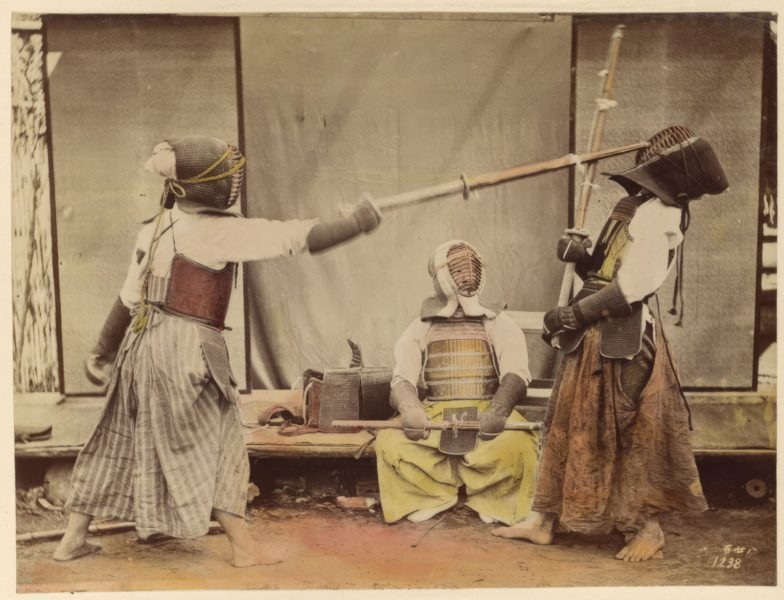
Kendo is a Japanese martial art whose origins can be traced to when sword fighting in Japan began during the 3rd and 4th centuries. However, modern kendo fighting comes roughly from the mid-19th century. It’s development and gradual evolution came from many different kenjutsu or fighting samurai methods that differed in each province of Japan.
The development of kendo was influenced by Jikishinkage-ryū, Akanishiha Ittō-ryū, and Hokushin Ittō-ryū, which all feature some sort of sword fencing or free dueling seen in the peaceful Edo Period. These three schools of sword fighting contributed greatly to current-day kendo.
One of Kendo’s main influences, and possible creators, is Naganuma Shirozaemon. He is believed to have invented the protective equipment and the shinai bamboo sword that partly replaced the wooden bokken around the beginning of the 18th century. Then a student of Ono Chuichi, a popular Kendo trainer named Nakanishi Chuta, improved the boku gear set and created the four-segment shinai used in kendo today.
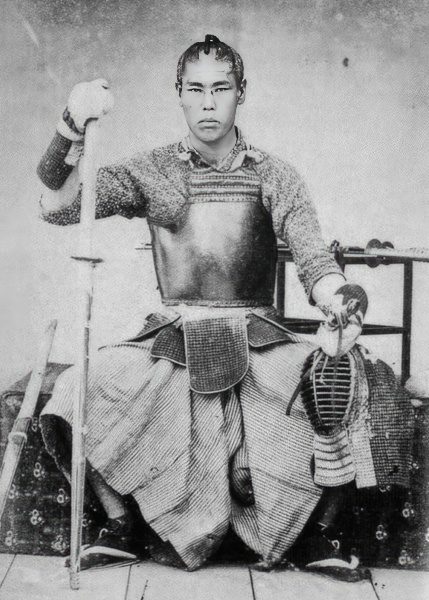
Chiba Shūsaku Narimasa, the founder of the fencing school Hokushin Ittō-ryū Hyōhō, highly popularized the kendo style of fencing. Because of his school’s popularity and safety, many followed his way and used kendo armor and swords instead of real swords to prevent injury.
With the end of the Tokugawa Shogunate’s rule in the Edo period, a ban on samurai led to kendo being used by the police to achieve better discipline and add a touch of Japanese tradition. It was added as a compulsory subject in Japanese schools around 1911 as a way to increase the nationalism of Japan’s youth and to show obedience to their emperor.
After World War II, many Japanese martial arts were banned because some were linked with helping the Japanese national government train their soldiers and youth. The kendo style was reintroduced in 1952 after three years of Shinai Kyōgi, a similar sword sport. With the lifting of this ban, the All-Japanese Kendō Federation association was founded and removed previous fighting styles in Kendo, such as grapples, throws, ground combat, and foot sweeps that could lead to injury. Then modern kendo emerged and is still used today.
Benefits of Training in Kendo
Kendo is more than just a fencing martial art with bamboo swords. It was created and evolved around the culture of the samurai warriors and their discipline, calm spirit, and Bushido moral code. It offers a solid yet exhausting training of both body and the mind. The benefits of training in Kendo are:
- Mental strength – Kendo requires much perseverance, discipline, and concentration. Practicing it cultivates a strong, healthy, focused mind to better deal with daily stress.
- Physical training – It is an extremely active martial art requiring flexibility, fast movement, stamina, and coordination. Kendo training is an exhausting activity for even the most experienced sportsmen.
- Spiritual development and respect – Kendo teaches a lot about mutual respect, etiquette, and courtesy, as well as achieving a state of clarity and tranquility of the mind. For this reason, kendo is often recommended to children.
- Cultural appreciation – Kendo offers a deep insight into Asian and Japanese culture. It opens up a new and unexplored world to its practitioners, especially when under the guidance of a true sensei (teacher).
- Social interaction and friendship – Training in kendo involves students entering training arenas called dojos, where folks of all ages can be spectators. This provides a sense of community, and lifelong friendships can be built by following the code of kendo.
- Self-defense – Kendo can better one’s skills for self-defense. Beginners can experience combat and battle adrenaline, which can help soothe their minds in the event of a real attack.
Kendo vs. Laido
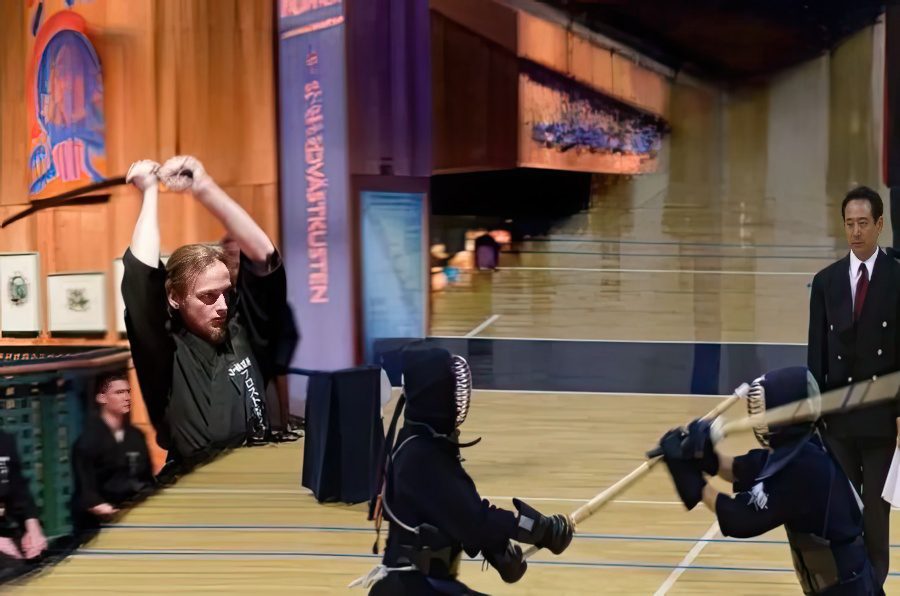
Iaido is another katana-related Japanese martial art that is sometimes wrongfully seen as a type of kendo activity. Although they can be similar to some extent because they both use a type of wooden or bamboo training sword, they are very different in their core, history, purpose, and techniques. Being good at Iaido doesn’t mean you are good at kendo.
The lai of Iaido translates to a warrior being constantly prepared for any opponent and anything that might take them by surprise. It is a skill that is supposed to teach their students to react to a sudden and unpredictable situation in daily life. That is why Iaido is based on techniques where a quick and sudden draw of a katana from its scabbard, called kata, is key.
In contrast, the kendo martial art isn’t a skill of quickly drawing a sword when one is in public. Kendo is a game or a match where two people can safely compete to prove who has the higher swordsmanship skills by using katana bamboo swords and wearing armor. Kendo was invented in the peaceful Edo period to preserve the katana samurai dueling culture.
